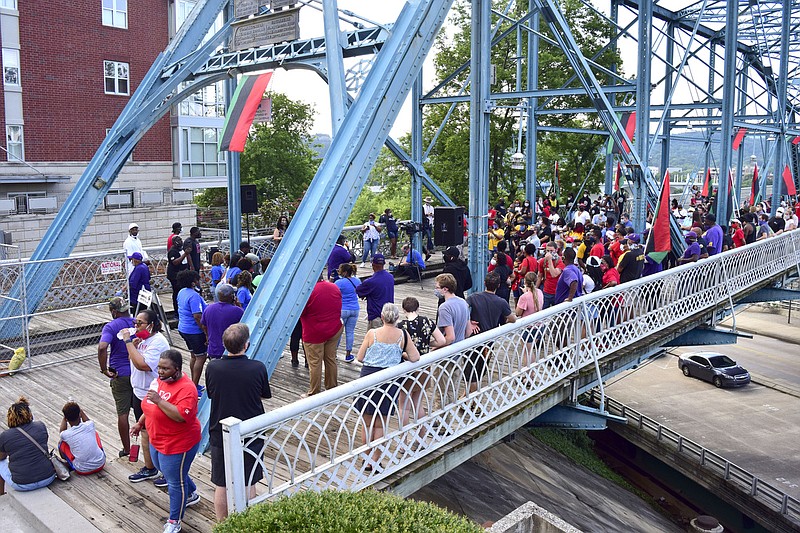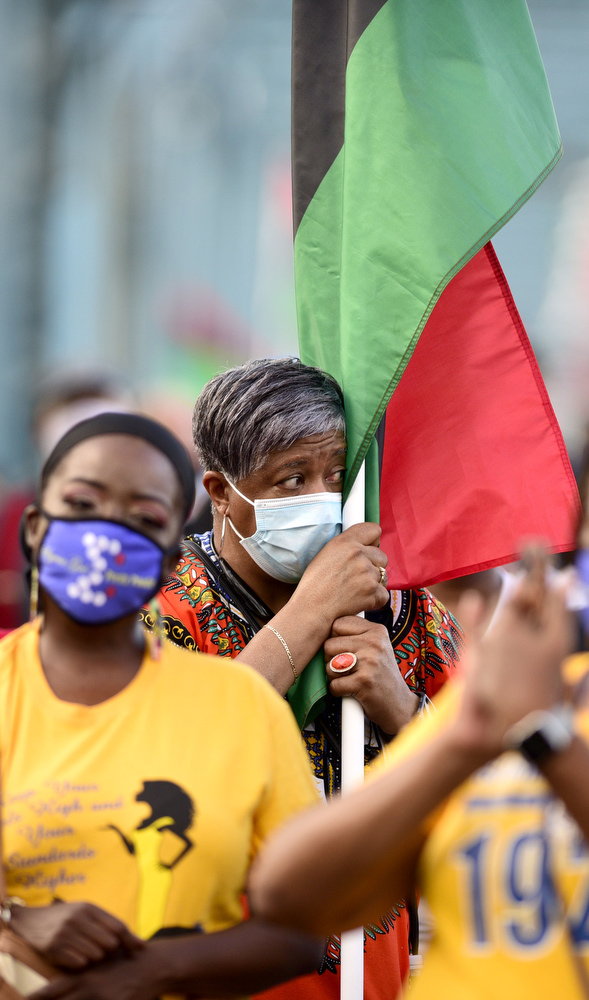Some years ago, Ric Morris was driving downtown. Morris is a dark-skinned Black man. He was driving a Mercedes. Used, not new.
Police pulled him over. Morris remembers the officer asking two questions.
The first question: "Do you have narcotics in the car?"
"No," Morris said. "I work at Hixson High School."
The second question: "Are you the janitor?"
***
This year marks the fourth annual Chattanooga Festival of Black Arts & Ideas, but right now, in particular, the festival carries even more meaning.
"More than ever, we have cause for celebration. We have had a lot of triumphs and tragedies this past year, all of which seem to be culminating at this event," said Morris, festival CEO. "A true celebration for the entire city."
The festival is tied to Juneteenth.
Juneteenth: the end of American slavery. On June 19, 1865, slaves in Texas became the first to hear of liberation. For many, this is the true Independence Day. After all, as Frederick Douglass once asked, what does July the Fourth mean to a slave?
The city recently established Juneteenth as a paid holiday. (Will the county?) Other local businesses, too.
This year's festival is located in east Chattanooga, not downtown.
Outdoors, it will be one of the first big post-pandemic events.
It highlights local Black artists.
"I want all people, regardless of race, to know Black artists create classical music, ballet, jazz, visual arts in all mediums from oil to drawings to film. I want our festival to show the depth of creativity and talent that exists in the Black community right here," said Morris.
It memorializes the 1921 destruction of Black Wall Street in Greenwood, Oklahoma.
Do you know this story?
On Monday, go to either end of Walnut Street Bridge. You'll see students from Chattanooga Preparatory School dressed as 1920s newsies - knickers! Extra, Extra! - passing out free mock papers from 1921.
Those papers? They'll tell you all about Black Wall Street.
In the early 1900s, in the Greenwood district of Tulsa, Oklahoma, Black residents built a city of industry, wealth and autonomy. In one section, "there were four hotels, two newspapers, eight doctors, seven barbers, nine restaurants and a half-dozen professional offices of real estate agents, dentists and lawyers. A cabaret and a cigar shop were on the block, too," according to a recent New York Times report.
In 1921, a Black teen, boarding an elevator, was accused of assaulting the elevator operator; she was a white woman.
"One common theory suggests Mr. Rowland tripped and grabbed onto the arm of Ms. Page while trying to catch his fall. She screamed, and he ran away," the Times states.
One trip. One fall. One accident.
That's all it takes.
White rage exploded.
Within days, white people burned Greenwood down. Black people murdered. Homes destroyed and looted. Businesses burned. White pilots dropped dynamite from airplanes.
No one has ever been arrested.
Or compensated for the loss.
"A staggering portrait of loss: 35 blocks burned to the ground; as many as 300 dead; hundreds injured; 8,000 to 10,000 left homeless; more than 1,470 homes burned or looted," the Times reported.
Why?
What is in the white heart that saw Black success and power as threatening?
This is not rhetorical. What is in the white mind that hates Black success?
Monday at 5 p.m., there's a youth town hall on racism at the Waterhouse Pavilion followed by a candlelight vigil at Miller Park honoring Black Wall Street. Some 300 red flags will line the lawn; Lakweshia Ewing will speak.
There are film festivals every Friday. On Thursday, June 10, a visual arts exhibition and cocktails. Saturday, June 19, a genealogy workshop. That afternoon, a block party. The next day, a Black Dads Matter Jazz brunch on the Southern Belle.
Visit blackartsandaideasfest.com for the full schedule.
Beneath it all, one goal:
Destroy the little black box.
***
Years ago, when Morris was pulled over, he was one of the smartest creatives in the city.
Graduated Howard High, among the top of his class. Then, Tennessee State University and a master's degree from Yale University.
He's known across the country as a consultant and thought leader. Studied at Harvard. At the time, he was teaching British and American Literature.
But the officer didn't know that.
He saw a dark skinned Black man driving a Mercedes.
Do you have narcotics?
Are you the janitor?
"We're constantly living Black in America," Morris said. "We're all placed in the same box. No matter what you might do to improve yourself or what expectations you try to live up to while you chase the American Dream like our white counterparts, we're always placed in that same little black box."
This is why we need Juneteenth.
And a Black Arts & Ideas Festival.
"I want all people to look beneath the surface of the color of skin. My skin. Your skin. We should see each person as an individual with their own unique way of doing and creating and contributing," said Morris. "That is what I want most in this world."
David Cook writes a Sunday column and can be reached at dcook@timesfreepress.com.

